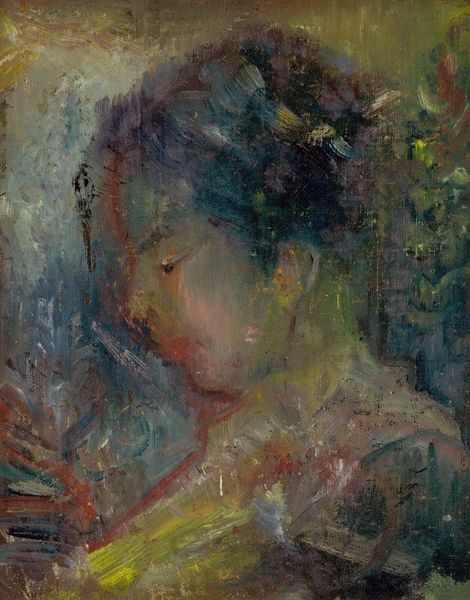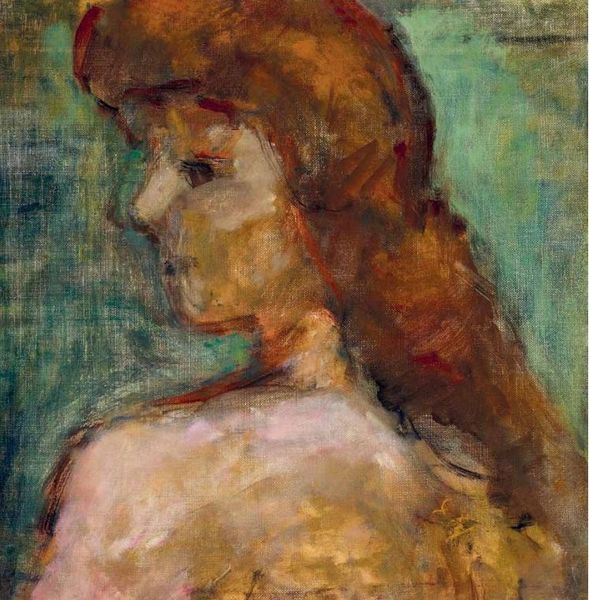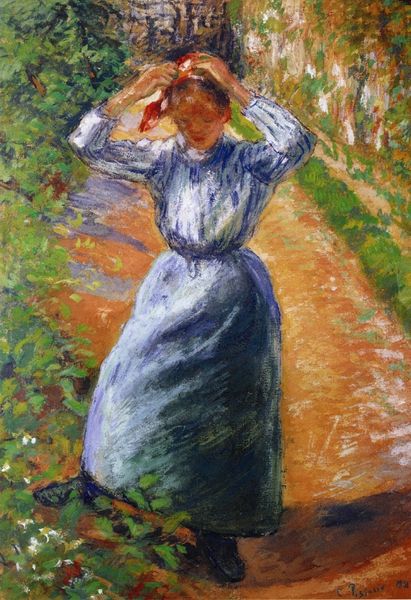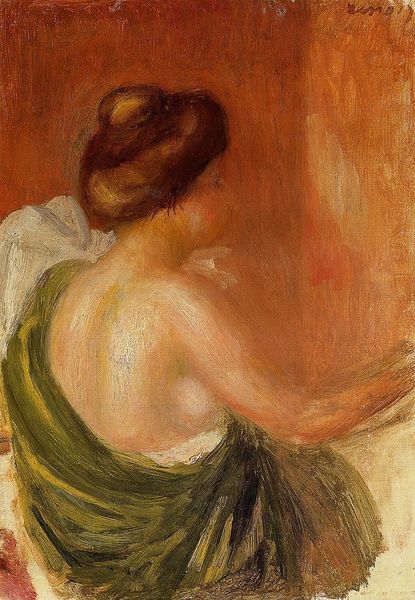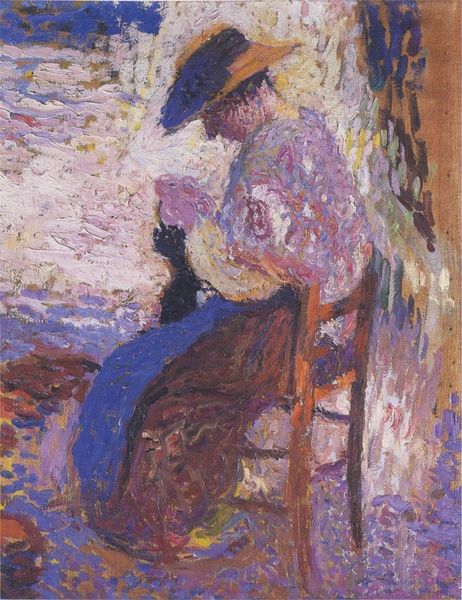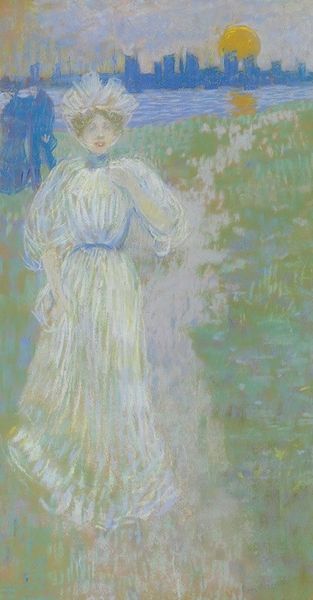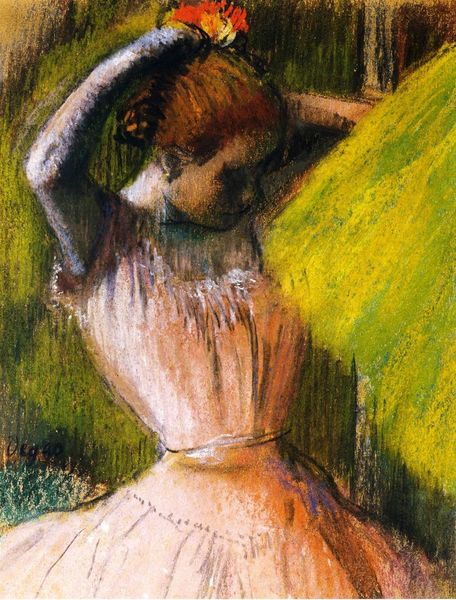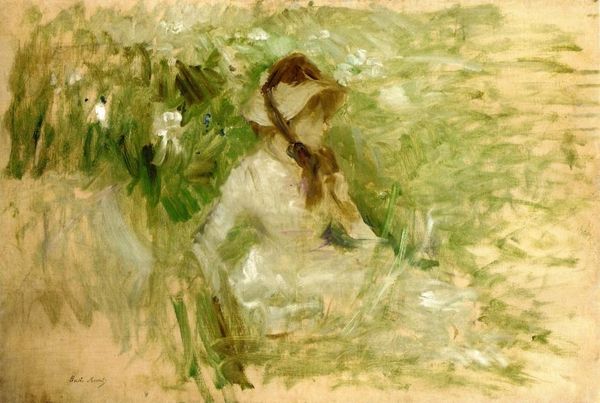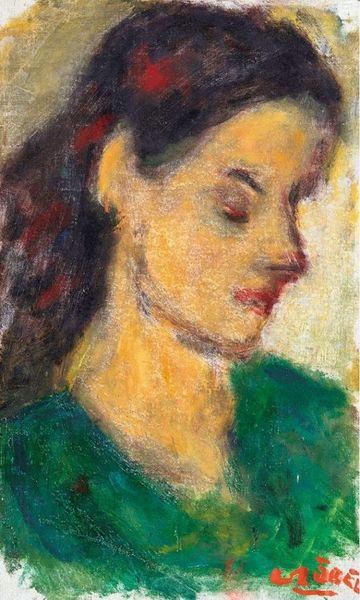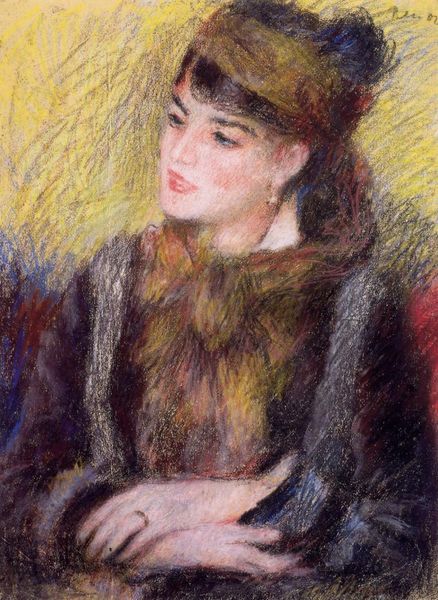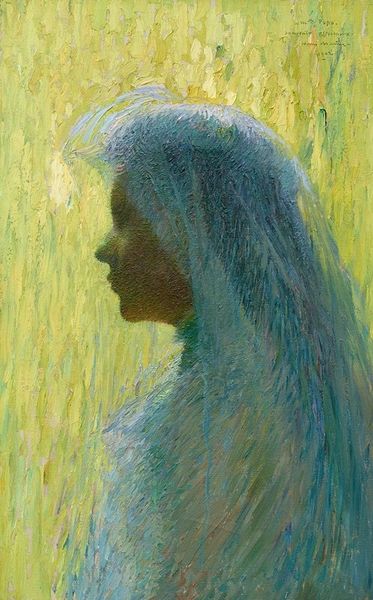
painting, oil-paint
#
portrait
#
painting
#
impressionism
#
oil-paint
#
impressionist landscape
#
figuration
#
oil painting
Copyright: Public domain
Curator: We’re looking at a piece simply called "Paisley Shawl," an oil painting attributed to Robert Lewis Reid. The date of creation is currently unknown. Editor: It’s immediately striking how muted the colors are, and how much the focus seems to be on the texture of the shawl itself, rather than the woman wearing it. It has an introverted, almost melancholic feel. Curator: Interesting. For me, it highlights the intersection of artistic creation and the booming textile industry of the time. Shawls like these, especially Paisley shawls, were highly desirable status symbols produced en masse using industrial weaving techniques which in turn, fueled intense debates around labor, taste and imitation within artisan communities. Editor: I see what you mean, but I’m more captivated by the way Reid uses broken brushstrokes to create a shimmering effect across the shawl. Note also the subtle juxtaposition of the warm, earthy tones of the garment against the cool, hazy background. It’s almost a study in contrasting textures. Curator: Precisely! These shawls weren't merely aesthetic objects. Their patterns had complex origins in colonial trade routes and the appropriation of design. Consider the socio-economic forces at play that made such mass produced objects so attractive and discuss the consequences this has on artistry? The availability of such material and techniques became part of the evolution and narrative for this work of art! Editor: Perhaps. Still, the formal tension between the visible brushwork and the obscured subject demands a closer look. It's like Reid is hinting at a story without revealing it, creating a sense of mystery through purely visual means. The limited palette creates a formal, structured harmony here. Curator: And that harmony disguises the realities of the workers whose labor wove that textile and their lives at this time in history. That too is part of the context here. The artist has undoubtedly adopted readily available painting materials to depict mass produced garments, but whose toil were used? It does allow a rich insight into a world and time now gone. Editor: Point taken. Even considering the material context, the painting undeniably holds power because of the careful arrangement of shape, line, and color and of course, brushstroke. Curator: I agree. Viewing it now helps me consider the layers of production that surround and are involved in any creative project.
Comments
No comments
Be the first to comment and join the conversation on the ultimate creative platform.
